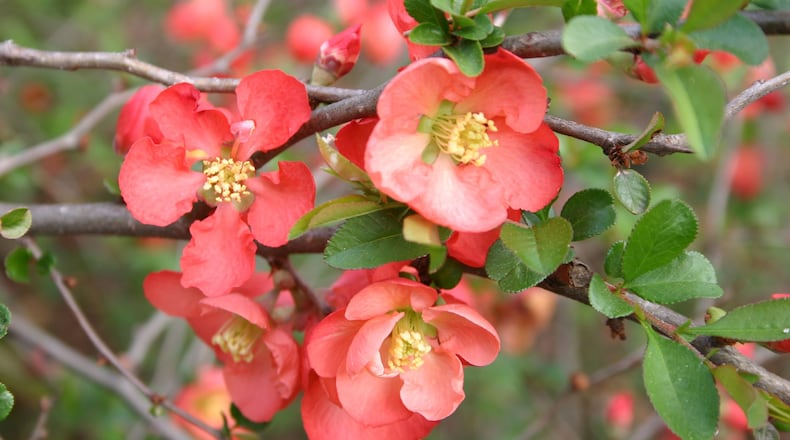Q: What can you tell me about the climate where flowering quince originated? Mine was looking great before the severe cold and it came through fine, along with my camellia. How do they do so well in cold weather? Vicki DeLoach, Woodstock
A: Like your camellia, flowering quince, Chaenomeles speciosa, is native to Asia. We live in plant-hardiness zone 7. Flowering quince is adapted to zones 4 to 9. This means they can tolerate winter low temperatures down to 20 below zero. They do well in cold weather because in their native home they adapted to local temperatures over thousands of years. For several hundred years, plant explorers have searched for new plants in Asian environments similar to the United States. Local experts like Ozzie Johnson, Scott McMahan, and Donglin Zhang have completed several expeditions to bring back interesting and hardy plants.
Q: When I was growing up people whitewashed the trunks of crapemyrtle and other trees. Was this meant to aid the tree, or was it just cosmetic? Sherman Walker, Columbus
A: Farmers sometimes paint young tree trunks white to prevent sunscald or cold damage. My bet is that non-farmers simply liked the look of white trunks in the countryside and began to imitate their rural brethren. I have seen landscapes where someone spray painted the limbs of bare shrubs in winter time. The red, yellow, and purple branches certainly stood out!
Q: I started a drip irrigation system last year in my first vegetable garden. I watered the tomatoes two gallons a day, seven days a week. When I pulled my plants up at the end of summer, I noticed the roots were quite shallow. Joel Williams, email
A: Root growth can certainly be inhibited by soggy soil but it can also be slowed by soil that doesn't have many pores in it. Make sure your garden soil is relatively loose and crumbly to a depth of ten inches. Once the soil is right, irrigation is a matter of daily observation. For tomatoes, I would start with a half-gallon of water every three days for small plants and increase to a maximum of two gallons per day when plants are huge. Allow the soil to dry out somewhat between waterings. If your plant leaves are not wilting, soil moisture is adequate and there's no need to water.
Q: I purchase the AJC every Sunday and am interested in using it in more ways than one. Does the AJC print using soy-based inks? Is the newspaper biodegradable and safe to use in gardening? Jessika Williams, email
A: Yes, the newspaper is printed with soy-based ink. The Sunday issue is great for garden use because there are so many pages. The Thursday issue, which contains my weekly garden column, is also excellent because it holds precious nuggets of garden wisdom! Another use for old newspapers is at animal shelters, which have a constant need for cage liners.
About the Author
The Latest
Featured

